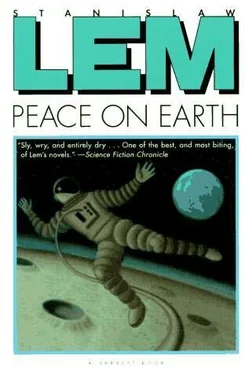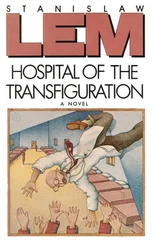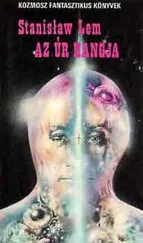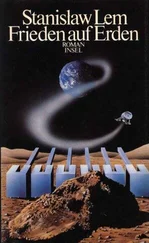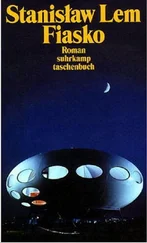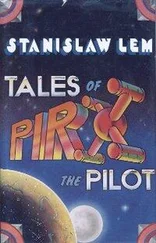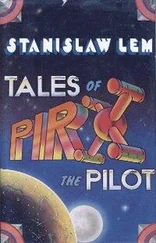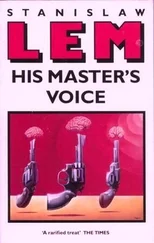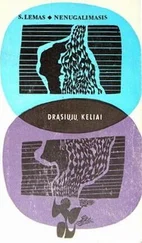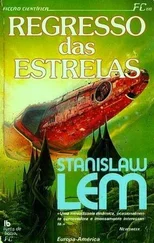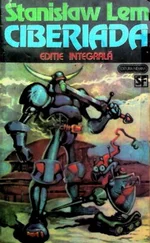Even in the twentieth century the tactic of fighting in closed ranks was replaced by the spreading out of troops, but there were still front lines. Now there were none. Microarmies easily penetrated all defenses. Nuclear weapons were ineffective combatting that viral contagion. The cost of a warhead, moreover, cannot be considerably greater than the value of its target. One doesn’t use a destroyer to go after leeches.
The most vexing problem in this unhumanized stage of man’s struggle with man turned out to be that of telling friend from foe. In the past it had been done by electronics, using the password principle. Challenged by radio waves, a plane or missile either transmitted back the correct answer or was attacked. This twentieth-century method became obsolete. Now the makers of arms borrowed from the plants and animals, from bacteria. For the recognition process they imitated the ways of living species: immune systems, the duel of antigen and antibody, tropism, mimicry, protective coloration, camouflage. A micro-weapon might pretend to be an innocent microorganism, or the fluff of a plant, a piece of pollen, but beneath that exterior lay corrosive death. The significance of informational combat also increased — not in the sense now of propaganda but as the invasion of enemy communications, to paralyze it or, as in the case of the atomic locust-cloud, to force premature condensation to critical mass before it reached its target. The author of the book discussed the cockroach, which was the prototype for one kind of micro-soldier. On its abdomen the cockroach has very fine hairs. When they are moved by the air, the insect flees, because these sensors are wired directly to its rear nerve ganglion, and they can distinguish between a draft and the disturbance caused by a predator.
As I read, I felt pity for the champions of uniforms, flags, and medals for bravery: the new era of warfare must have been anathema to their high ideals. The audior used the term upside-down evolution, because in the beginning of life there were microscopic systems which slowly changed into larger systems, while this military evolution proceeded the other way, microminiaturization, and the great human brain was replaced by mechanical insect ganglia. Microarmies arose in two steps. First, the designers and builders were still human; then the unhumanized divisions were conceived, battle-tested, and put into mass production by computer systems that were equally nonhuman. People were eliminated from the military and then from the weapons industry by a phenomenon called “sociointegrational degeneration.” The individual soldier underwent degeneration: he became smaller and simpler. In the end he had the intelligence of an ant or termite. But the collective of these tiny warriors assumed a greater role. The nonliving army was far more complex than a beehive or ant hill; it was more like a biotope in nature, an ecosystem, a subtle equilibrium between competitive, antagonistic, and symbiotic species. A sergeant or corporal in such an army obviously had nothing to do. To grasp the whole picture, merely to inspect the troops, not even the brain power of an entire university would suffice. Thus officers as well as poor Third World countries did not fare well during the great military revolution of the twenty-first century. The irresistible momentum of army unhumanization destroyed the lofty traditions of maneuvers, marches, drills, changing the guard, and regalia. For a while but alas not for long, it was possible to preserve the highest ranks for people, but the strategy-computational superiority of the computerized echelons of command finally put even the most corpulent leaders, including four-star generals, out of work. A chest of ribbons and medals was no protection from early retirement. These officers, facing permanent unemployment — for they could do nothing else — revolted, forming an underground terrorist movement. The crushing of this revolt with the use of microspies and minipolice built on the abovementioned cockroach principle was a grim chapter in our history, because neither cover of dark nor mist nor any kind of camouflage could save those desperate traditionalists loyal to the ideas of Achilles and Clausewitz.
As for the poor countries, they could go on fighting as before, using live people, but only against opponents as anachronistic as themselves. Those who couldn’t automate militarily had to sit quietly in the corner.
But it wasn’t fun for the rich countries either. The old political games went out the window. The line separating war and peace, having long been blurry, was now completely erased. The twentieth century had dispensed with the formal declaration of war and introduced the fifth column, sabotage, cold war, and war by proxy, but that was only the beginning. Summit meetings for disarmament pursued mutual understanding and a balance of power but were also held to learn the strengths and weaknesses of the enemy. The world of the war-or-peace alternative became a world in which war was peace and peace war. First, wide-range subversive activity was conducted under the mask of official peace: the infiltration of political, religious, and social movements, even such worthy movements as those to protect the environment; the infiltration also of the culture and mass media, taking advantage of the illusions of the young and the conservatism of the old. Then covert military activity intensified to the point of being overt, except that it was invisible. Acid rain had been known in the twentieth century; now rain fell that was so corrosive, it destroyed the roofs of houses and factories, roads, electrical lines, but no one knew whether this was pollution or the enemy sending poison clouds their way. It was thus with everything. Farm animals died in epidemics that could have been natural or intentional. A storm that flooded the coast might have been an act of God or the clever redirection of a hurricane at sea. A drought — a normal disaster, or one caused by the secret switching of heavy clouds with light. With seismic, meteorological, and epidemiological counterespionage and reconnaissance the scientists had their hands full. More and more of the scientific community became involved with intelligence work, yet the results of their research grew less and less clear. The tracking down of saboteurs was child’s play in the days when they were human; but now, when the suspect was a hurricane or hailstorm, or a crop or cattle disease, or the rise in infant mortality or cancer rate, or even a meteor (the twentieth century had already considered the idea of aiming an asteroid at enemy territory), life became intolerable. Intolerable not only for the man on the street but also for heads of state, who were helpless and confused, and their advisors no less. The military academies added new courses such as cryptotactics, cryptocountering (that is, taking counterespionage to the n th power), crypto field theory, and finally cryptocryptics, the secret study of the secret use of secret weapons indistinguishable from natural phenomena.
To blacken the enemy, one could fake a natural disaster in one’s own country — in a way that made it obvious it was not natural. Also it was proved that certain rich nations, helping those less fortunate, put a drug into the supplies of wheat, corn, and cocoa it sold (cheaply), which caused impotence. This was, then, a secret war of birth control. Although the catastrophic consequence of such escalation was obvious — wherein victory was equivalent to defeat for both sides — the politicians continued with business as usual, concerned more about the voters than the future, making fuzzy promises and being increasingly less able to affect the course of real events. War was peace, not from Orwell’s totalitarian doublethink but because of a technology that erased the boundary between natural and artificial in every aspect of human life and its environment.
Читать дальше
